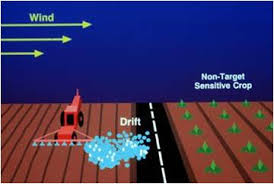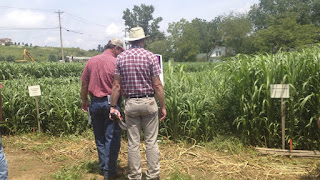There is a huge need for children to understand where their food comes from and how it is produced. So many children today have no knowledge of the steps before food arrives on the shelves at the grocery store. As agriculture educators, it is our job to advocate for this industry and ensure that children know where their food comes from, how it is produced, and how to make appropriate, healthy eating choices based on this knowledge.
My program was titled Agriculture Kids Day Camp. The camp was held for elementary-aged students in second through fourth grades. Attending 4-H camp allowed me to gain a better understanding of how elementary-aged students learn best, so I was able to plan activities that required lots of hands-on learning and visuals. The instruction topics included plant and animal science. The Carroll County community is very diverse agriculturally, so I wanted to ensure that participants were introduced to both of these topics. Virginia Science SOLs also focus on plant reproduction and plant science, so I was able to reiterate what students have or will be learning in the classroom at school as well.
I had a total of ten participants. I learned a lot about program advertising during this experience, particularly how important and difficult it is to get the word out about a program in a rural community. The students were on break for summer vacation which made it even harder. I advertised the program in the local newspaper, on Facebook, and even by flyers and word-of-mouth. Thankfully, ten participants was the perfect number for my facility, materials, and volunteers to help with class management.
We began the morning at 9:00 with a very short introduction to plant science, particularly seed germination and plant growth requirements: sunlight, water, air, and nutrients. Afterwards, each student made their own "dirt baby." A dirt baby is a stocking filled with grass seed and potting soil that is decorated any way the student wishes. The grass seed will sprout out the stocking as "hair" which can be cut as the grass grows. The kids were so creative! We made a variety of animals, including bears, rabbits, horses, and pigs. We even had some minions! This was my favorite activity from the day, and the children LOVED it. Some of them even made two.
 |
| The kids picking out their materials for dirt babies. |
 |
| Filling the stockings with grass seed and potting soil. |
 |
| Final Products! |
The rest of the morning was spent learning about plant and animals cells and making plant cell models out of plastic bags and various materials. We also made butter and ice cream as we learned about dairy. I brought in a model milk cow for the kids to play with as the learned about lactation. To learn about soil, we made edible soil horizons.
 |
| Plant Cells! |
 |
| Daisy the dairy cow |
 |
| Making ice cream |
I am so pleased with today's event, and it just goes to prove that I am in the right line of study: agricultural education.



















